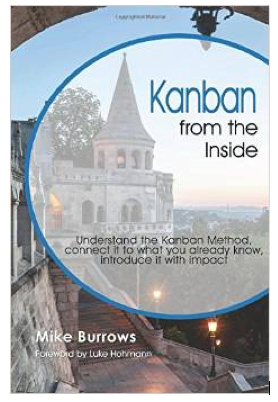This week’s excerpt comes from the chapter’s conclusion. If you think that classes of service is just a technical topic that has no human (or humane) dimension, think again!
Toward a Healthy Mix of Work
This much should be obvious: You can’t plan to have everyone occupied 100% of their time on fixed-date work, allow them to be interrupted by expedited items, and still expect predictability. Even without the interruptions, 100% utilization on work that must meet stringent deadlines is a recipe not for efficiency, but for extreme unpredictability and delay, not to mention pain at the human level. Systems need slack if they are to absorb variation rather than accumulate it, and people need it too.
You might be wondering what a “safe” (or “humane”) utilization level might be. 90%? 80%? I believe that this approaches the problem from the wrong direction. From direct experience as a manager, and from clients sampled by myself and David, fixed-date items need make up no more than 20% of the workload of most organizations; often, it can be significantly less. After allowing (say) 10–20% for intangible work, and a realistic provision for expedited and other unplanned work, the biggest category of all should be the high-value, urgency-driven work. This is exactly as you would hope it to be, assuming that you seek to maximize the flow of value to the business. Happily, predictability is achievable, too, thanks to the presence in the system of work items that can safely be delayed when time-critical work needs to take precedence.
Classes of service and other categorizations enable some broad-brush prioritization decisions to be made independently of potentially contentious decisions about individual items. Making these explicit creates the opportunity both to align them to wider corporate priorities and to match them to customer needs. So long as there is the short-term flexibility to trade between categories, it should be possible to satisfy both constituencies.
For your workshops, questions like these help guide the overall mix of work in the right direction and prompt discussion about system design:
- What proportion of our portfolio is necessarily date-driven? Are we entering into date commitments unnecessarily, and if so, can we begin to bring this proportion down? Do we make reference to available capacity when scheduling? Are we able to respond when dates are under threat?
- How much capacity do we need to hold in reserve for expedited and other unplanned work? What steps can we take to reduce and/or limit the amount we are servicing at any given time?
- Are we doing enough intangible work? What space do we give people to explore better ways of doing things?
- What capacity remains for standard, urgency-driven work? Do our systems reliably bring the right items to the front of the queue first?
If these questions make you uncomfortable, perhaps they should! Could it be that people are over-organized—“projectized” or siloed? If your organization lacks the ability to self-organize when and where it most needs it, it is paying a heavy price.
I have in the past described Kanban’s ability to deal with variety as one of its “killer features.” Arguably, the way STATIK encourages organizations to embrace variety is even more powerful. If only it were better known!

